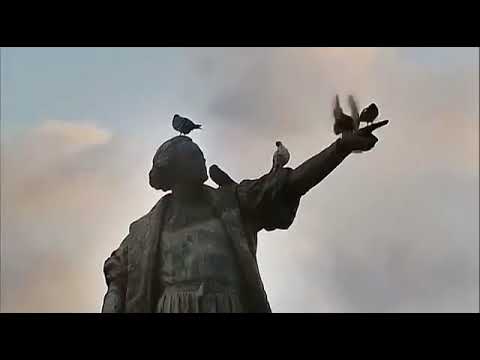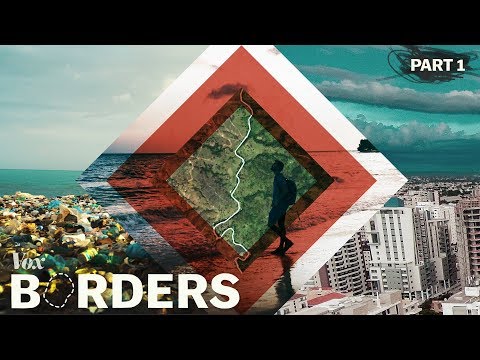The Price of Sugar documents injustices committed against Haitians in the sugar industry in the Dominican Republic. On that Caribbean island, tourists flock to pristine beaches, with little knowledge that a few miles away thousands of dispossessed Haitians are under armed guard, a form of slavery on plantations harvesting sugarcane, most of which ends up in U.S. kitchens.

Watch this video on YouTube
Documentary: The Price of Sugar, Directed by Bill Haney, Featuring Father Christopher Hartley, Narrated by Paul Newman, 2007.
The Not-So-Sweet Reality of Dominican Sugar
Cutting cane by machete, they work 14 hour days, 7 days a week, frequently without access to decent housing, electricity, clean water, education, healthcare or adequate nutrition. The Price of Sugar follows a charismatic Spanish priest, Father Christopher Hartley, as he organizes some of this hemisphere’s poorest people, challenging the powerful interests profiting from their work. This film raises key questions about where the products we consume originate, at what human cost they are produced and ultimately, where our responsibility lies. — Louise Rosen
MOVIE REVIEW | THE PRICE OF SUGAR; Sugar Cane’s Bitter Harvest In the Dominican Republic
By Stephen Holden, Published in The New York Times
The Price of Sugar, Bill Haney’s muckraking documentary about Haitians lured into a form of indentured servitude on sugar plantations across the border in the Dominican Republic, focuses on the Rev. Christopher Hartley, a courageous and stubborn Spanish priest who devoted 10 years to bettering their desperate plight.
The movie visits the workers’ shantytowns, known as bateyes, which, according to the film, resembled forced labor camps patrolled by armed guards before Father Hartley’s reform movement. Through his organizing and relentless pressuring of the plantation owners in the face of death threats, some bateyes in his parish now have improved living and working conditions and have been visited by American doctors.
A robust, charismatic organizer, Father Hartley is a disciple of Mother Teresa. Born in 1959 to an aristocratic Spanish-British family, he dropped out of an elite private school at 15, joined a seminary and for much of 20 years, beginning in 1977, worked with her in poor communities around the world. His sojourn in the Dominican Republic began in 1997 when he volunteered as a missionary in the diocese of San Pedro de Macoris, a 600-square-mile parish based in the town of San Jose los Llanos. The conditions he found on the plantations, he says, were tantamount to slavery.
As Haiti specialist Paul Farmer explains in his book, “The Uses of Haiti,” since Haitians defeated Napoleon’s army in the only successful slave revolution in history, Washington has made sure that Haiti remained a “dysfunctional” state “rife with poverty and violence.” In the late 1980s a grassroots Haitian peoples movement forced an end to the reign of the U.S.-backed father and son dictatorships of “Papa Doc” and “Baby Doc” Duvalier.
Liberation theologian Jean-Bertrand Aristide emerged as part of this movement and surprised the U.S. by winning the overwhelming majority of the popular vote in 1990. The George H. W. Bush Administration subsequently backed right wing military and paramilitary forces behind the 1991 coup which forced Aristide into exile; in 2004 the George W. Bush Administration orchestrated (with France and Canada) a bloody coup against the second democratically-elected Aristide government.
— Ben Terrall, HaitiAnalysis.com
STORY: Land Grab in “Paradise”: Haiti’s Île à Vache Fights Back


Each year, as the sugar harvest approaches, as many as 20,000 Haitian workers are recruited with the promise of steady work at higher pay than they can earn in Haiti, the poorer of the two countries. With the complicity of military and immigration authorities, the movie says, these destitute immigrants are loaded onto trucks, stripped of their identification papers and transported in the middle of the night to the bateyes, where many are housed in concentration-camp-like barracks. Estimates of the population of undocumented Haitians living in the camps range from 650,000 to one million.
Once harvesting begins, the film explains, they work 14 hours a day, seven days a week, earning less than $1 a day with minimal-to-nonexistent health care. Instead of cash, they are paid in vouchers that can be redeemed for overpriced food at company-owned stores. Since they can afford only one meal a day, most of the calories they consume come from chewing sugar cane. Since children born in the batey are not recognized as Dominican citizens, they grow up stateless.
In 2013, the U.S. Department of Labor’s Office of Trade and Labor Affairs in response to Rev. Hartley’s allegations, “found evidence of apparent and potential violations” of labor law and workers’ rights called for in the free trade agreement signed in 2004 by the United States and the Dominican Republic. The US imports about 220,000 tons of sugar annually from the DR.
Many of the plantations shown are owned by the Vicini family, a dynasty of sugar barons who refused to be interviewed for the film and sent the filmmakers a cease-and-desist letter in an attempt to block its release. The United States, which imports much of the Dominican sugar, is partly culpable, the movie says, because of political contributions from the barons that have helped maintain the price of imported Dominican sugar at close to double the world price.
Haitian “Dreamers” Shut Out of Citizenship: On September 23, 2013, the Constitutional Court of the Dominican Republic ruled that citizenship can only be granted to people who were born to one Dominican parent since 1929. Asked to rule in the case of one person, a Dominican-born woman named Juliana Deguis Pierre seeking identity papers, the court decided to retroactively render four generations of workers stateless. This would be as if American adults, whose grandparents came to the United States in the 1930s, suddenly had their citizenship stripped away. In the meantime, they would be expected to apply to their grandparents’ birthplace for papers.
— Edwidge Danticat in the Miami Herald
STORY: Child Labor: The Dark Side of Chocolate

Watch this video on YouTube
One island, two worlds: the story of Haiti and the DR, Video documentary by Vox
The Price of Sugar is narrated in calm, gravelly tones by Paul Newman. Like most documentary polemics, it simplifies the issues it confronts and selects facts that bolster its black-and-white, heroes-and-villains view of raw economic power.
The film does show how Father Hartley’s efforts backfired in sad, unforeseen ways. Once the immigrant laborers were permitted to travel outside the bateyes, they flooded the town of San Jose los Llanos, and simmering ethnic hatred of Haitians among Dominicans came to a boil, fanned by bribery and propaganda from the sugar barons.
Father Hartley was reassigned to Ethiopia in August. The future of the bateyes is unclear. He worries that once the pressure is off the Vicini Group (the country’s second-largest sugar producer), his reforms will be rescinded and the previous labor conditions will resume.
THE PRICE OF SUGAR
Directed by Bill Haney; written (in English and Spanish, with English subtitles) by Mr. Haney and Peter Rhodes; narrated by Paul Newman; directors of photography, Eric Cochran and Jerry Risius; edited by Mr. Rhodes; music by Claudio Ragazzi; produced by Eric Grunebaum and Mr. Haney; released by Mitropoulos Films.
Updated 13 April 2023









Pingback: Sugarcane Slavery in the Dominican Republic | Spring 2015 SP 100.01
Pingback: Go, Sell All You Have - Wilmington Friends Meeting
Pingback: Emails to Grandma | Contending for The Faith
Pingback: Monumental Mausolea: Building Projects and Slave Labor from Antiquity to the World Cup – SARAH E. BOND
Pingback: EL LOBBY DEL AZÚCAR | CIENCIA SIN MIEDO
Pingback: Let’s Talk About Sugar – Baking Alone in the Kitchen and Swearing
Pingback: The Hidden Labor Behind the Luxurious Colors of Purple and Indigo - Hyperallergic - HexaLink